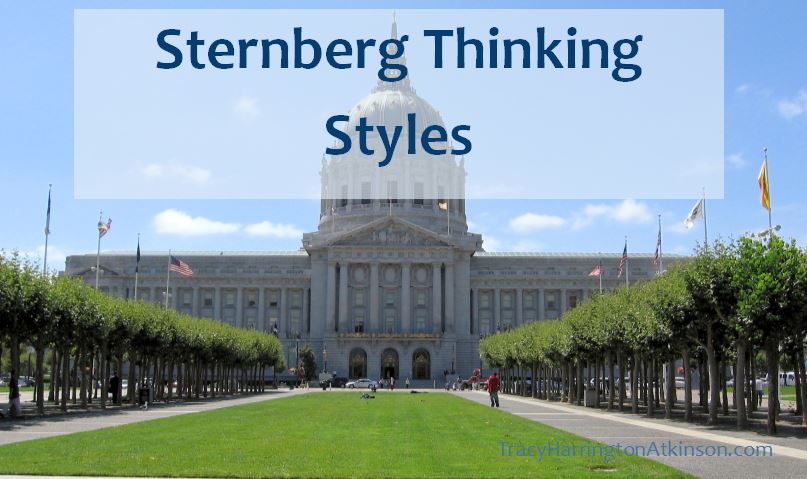Sternberg Thinking Styles – 1998
Teachers can’t afford not to be flexible. The world is changing quickly. Don’t just teach to though who think and learn analytically.
~ Robert Sternberg
Robert Sternberg is a psychologist and professor of human development at Cornell University with a PhD from Stanford University. Sternberg has proposed several theories within psychology, intelligence and learning, including Triarchic Theory of Intelligence, Triarchic Model and a cognitive model or thinking styles. Sternberg’s Thinking Styles are based on forms, functions, levels, scopes and leanings. Within individual thinking, man mirrors the form of government within the United States with three branches, namely executive branch, legislative branch and judicial branch.
Functions
Within individual thinking, man mirrors the form of government within the United States with three branches, namely executive branch, legislative branch and judicial branch. Executive people are the rule followers and have structures by which they govern their lives. Legislative individuals consistently seek to build new structures and rules to accommodate information while judicial people will evaluate the rules and even procedures, using them to analyze all structures.
Forms
Sternberg identify four forms within cognitive structure, namely hierarchical, monarchic, oligarchic and anarchic. The hierarchic style of cognitive structure builds multiple layers or goals at one time and will rank them in order of importance while the oligarchic style participates in the same model but endures great stress in the ranking action. The anarchic form, as implied by the title, pushes back against conformity, rules and any system. Problems will be approached in a unique, individual manner. Monarchic form is simply to recall with the term ‘mono’ meaning singular. This form will pursue one idea or thought until it has run its course.
Scope
There remain only two scopes: internal and external which relate to the mental governing. Internal individuals will work inside themselves, inwardly, independently in contrast the external individual who work outside of themselves, seeking the input of others.
Levels
Sternberg identify two levels in his thinking styles: global and local. Global level focuses on an abstract, holistic view. Local level focuses on the practical problems, concrete in nature.
Leanings
There are only two leanings within Sternberg’s model: liberal and conservative. The liberal leaning will prefer the new and unfamiliar within tasks, projects and rules. The conservative learning is more traditional, preferring existing rules and procedures.
Tracy Atkinson, mother of six, lives in the Midwest with her husband and spirited long-haired miniature dachshunds. She is a teacher, having taught elementary school to higher education, holding degrees in elementary education and a master’s in higher education. Her passion is teaching, researching, studying and enjoying time with her family. She has published several titles, including MBTI Learning Styles: A Practical Approach. Courses available on learning styles and student success at: Udemy, Teachable or Thinkific.



Comments are closed